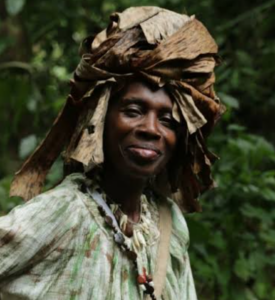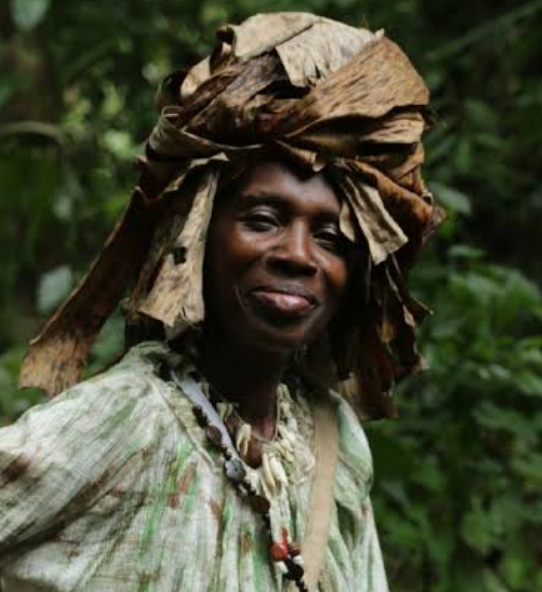By Owei Lakemfa
NANNY, a young Akan woman from present day Ghana, born about 1686 was captured with her four brothers and sold into slavery. They were taken on ‘The Journey of No Return’ across the Atlantic Ocean, becoming part of the 12.5 million Africans forced on this journey by Europeans and Americans who wanted free labour to exploit for profit.
Unlike the 1.8 million others who perished during this journey and had their bodies fed to the roaring ocean waves, Nanny, who was to become known as “Nanny of the Maroons,” and her brothers, survived the ordeal and arrived in Jamaica.
They later escaped from the slave plantations and fled into the mountains and jungles of Jamaica to become Maroons. This was the name for escaped slaves who banded together and fought for freedom, initially for themselves and eventually for various Latin American and Caribbean countries, including Jamaica.
The names of slaves, in almost all cases, were lost. This was part of the depersonalization and dehumanisation of the slave, who was forced to forget the past and live entirely at the pleasure of the slave owner, who exercised the power of life or death on his “property. So it is not unlikely that her original name was not Nanny. This was most likely a corruption of the name Maame, which means mother in Twi. This would have been preferred to the names given her by the slave masters.
By the mid-1550s, there were already escaped slaves in the Caribbean, who, with no way of finding their way back home to their loved ones, banded together to fight the slave owners and establish their own communities. In Jamaica, as in some other countries, these freedom fighters were called Maroons.
The word, “maroon” was derived from the Spanish word “Cimarron,” which was originally used for runaway cattle. Since African slaves were valued and treated no better than cattle, it came to be used for escaped African slaves. Maroon communities were typically located among mountains and swamps, making slave owners and European countries’ raids difficult.
They also provided safe bases for the Maroons to conduct raids on white plantations and organise guerrilla armies. They linked up with local Native Americans to defend the terrain. Today, Maroon communities still exist in various North and South America countries like Venezuela, Brazil, Mexico, Puerto Rico, Suriname, Ecuador and the United States especially in the Carolina’s, Alabama, Florida and New Orleans areas. They also exist on islands in the Indian Ocean.
After escaping from the plantations, Nanny and her brothers joined the Maroons. She later founded a Maroon village with one of her brothers, Quao, in the Blue Mountains in eastern Jamaica in 1720. British Captain Stoddart said Nanny Town, was “situated on one of the highest mountains on the island” and found the only path leading to it, to be: “steep, rocky, and difficult, and not wide enough to admit the passage of two persons abreast.”
This forced the invading army into a single file and an easy target for the Nanny fighters. This part of Jamaica was described as “Windward” and the inhabitants were known as “Windward Maroons.” The village became known as Nanny Town. The Maroons evolved their own traditional religious practices with West African influences.

It was called Obeah. Nanny was a priestess, leader, and commander-in-chief of the rebel army who trained her soldiers in guerrilla warfare. She was so fierce in battle that the Europeans tried to pass her off as a myth created to rally the forces of the Maroons. But despite strenuous efforts, the Europeans could not force her off the history books.
This is primarily because a ghost could not have been recorded by European writers; could not have been declared wanted with a bounty on her by the colonialists, nor could a myth had physically established two separate towns. Also, she organised and supervised the escape of about 1,000 slaves over a three-decade period and resettled them.
The Queen Nanny rebels fought the British military for six years from 1728 until the latter, led by Commander Stoddard seized and destroyed Nanny Town in 1734. In fact, the British claimed that one of its mercenaries, Captain William Cuffee alias Captain Sambo, leading the “Black Shots,” killed Nanny in 1733 during the battle for the town.
However, a year later, the same British reported that she was leading the Windward Maroons in a retreat westward. Eventually, she was reported to have led her troops to take refuge near the Rio Grande, one of the largest rivers in the country. The Maroons were making slavery costly and unsustainable and creating insecurity for the Europeans.
These, coupled with the European powers’ inability to defeat them after 84 years of insurgency, led the British settlers in 1738 to call for a truce. The first peace treaty was signed with the Leeward or Western Maroons, led by Captain Cudjoe (Kojo), another Maroon of Ghanaian origin, in 1739.
The other, was with the Windward Maroons on April 20, 1740. The agreement tried to limit Maroon attacks against slavery, and also protect the Maroons. For instance, Article Eight states that “if any White man shall do any manner of injury to Cudjoe, his successors, or any of his or their people, (the Maroon) shall apply to any commanding officer or magistrate in the neighbourhood for justice.
Article Fourteen provided for two White men as ambassadors to live with the Maroons: “in order to maintain a friendly correspondence with the inhabitants of this island.” This clearly could be used for espionage. However, the treaty, in Article Three, gave 1,500 acres of Crown land to the Maroons.
Nanny took possession of the 500 acres allotted to her and her followers in Portland Parish in 1740. There, she built the New Nanny Town, which still exists today as Moore Town. She died a decade later. In 1781, the town bought an additional 500 acres of land. Ninety-nine years after the destruction of Nanny Town, slavery was abolished. Jamaica, 212 years after Nanny passed on, gained independence on August 6, 1962.
The date the treaty was signed is observed as a national holiday. Her grave is regarded as a monument, and Jamaica’s $500 note bears her image. Also, the Jamaican Government in 1975, awarded Queen Nanny the “Right Excellent” national medal, making her the only woman among the country’s seven National Heroes.
Perhaps one more step the Jamaican government needs to take is to restore Nanny as the official name of the town. In about 1760 it had been renamed Moore Town after Governor Henry Moore. Nanny of the Maroons deservedly won her place in the pantheon of fighters for human freedom.
Dear readers, we really need your support to keep on serving you with authoritative, truthful, and juicy stories everyday. For your support, please reach out to the editor @gavelinternational66@gmail.com

